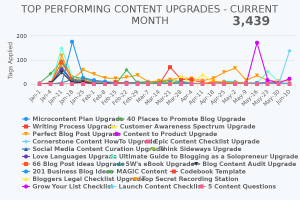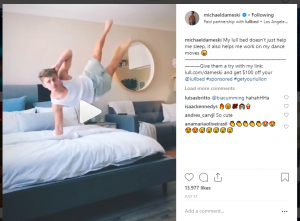There are exceptional people out there who are capable of starting epidemics. All you have to do is find them. – Malcolm Gladwell.
Marketing, Then and Now
Marketing has changed, but building authentic relationships, the heart of every successful customer journey, hasn’t.
Back in the 90’s, it took literal face-to-face time for relationship building to happen, be it traveling to someone’s office or networking with them at a conference. Today, that process has accelerated dramatically, and we can make meaningful connections online by accessing digestible bits of information about key buyers and decision makers with a few quick searches through social media. That’s not to say we don’t build relationships offline — of course, we do — but technology has given us shortcuts to finding common interests we can use to build meaningful and useful connections with potential buyers, as well as the tools and channels to communicate with them at scale.
Today, many people live a lot of their lives online, and socially savvy marketers can learn about a prospect’s interests’ by glancing through their Twitter feed, Facebook, or Instagram accounts; reading a blog post they wrote, or subscribing to their YouTube channel.
To reach customers at scale, retailers of all sizes are increasingly turning to Internet-famous personalities like Casey Neistat, Dodie, and Jaclyn Hill. Luckily, for those without a Nike pocketbook, there is also an opportunity to work with micro-celebrities (those with smaller but more engaged, focused targeted communities). Micro-communities have allowed businesses to segment what used to be an impossibly broad demographic pool into narrow categories.
Influencer marketing is a challenging discipline to master, but the potential gains of a successful campaign are astronomical. As the field continues to grow, this tactic could be the very thing that takes your business to the next level.
Before you dive into your first influencer marketing campaign, make sure these four Influencer pieces fit neatly into your marketing puzzle:
- Influencer Marketing is a Long-Term Play
Whether it’s partnering with an SEO consultant or working with an ecommerce fulfillment partner, you approach working with third-party vendors as a question of building long-term trust and growing together. The same is true with influencer marketing. As you research potential partners, focus on the people who have established brands and have cultivated an authentic dialogue with your potential customers about topics that are directly related to your brand promise.
When executed correctly, your Influencer Marketing will deliver some short-term successes, including same-day sales. However, much of the benefit will be realized in the long term. Unlike Facebook ads, which you can turn on and off at will, you’ll realize the benefits of Influencer Marketing are based on long-term communications with their community. This could happen over a period of days or weeks (in the case of Facebook or Instagram influencers), or even months (when working with Youtubers).
- Building a Solid Foundation is Vital
Before you’ve even sent out your first message to an influencer asking what you’d like her to do for your brand, you need to establish your goals. What KPIs do you need to hit? Which ones aren’t as important? How will you measure campaign success?
You also need to walk backward from your end goals (more users, more subscribers, increased sales, etc) and evaluate your target audience. Based on demographics, purchase lifecycle and the platform your audience uses most, you can get a sense of the direction you want your campaign to go in. Pro tip: It helps to brainstorm a roadmap that you can refer back to in order to assess the triumphs and shortfalls of your influencer marketing campaign as it progresses.
Defining measurable benchmarks such as cost per view, cost per acquisition, overall reach, and engagement rate will not only make it simple for you to measure the short-term successes (fingers crossed!) of any campaigns you embark on but hopefully provide you with a long-term picture of growth. Sticking to the same KPIs makes evaluating an influencer’s worth, at least at a glance, pretty straightforward, too.
All these decisions need to be made and documented long before the first dollar on a Facebook ad has been spent or the first bit of free swag has been sent.
When it comes to messaging guidelines, it’s best to give influencers a long leash. If you do your research and have properly vetted an influencer, respect the fact that he knows his audience better than you do since he interacts with them on a daily basis. While it’s smart to provide some basic guidelines– keep a PG-13 tone, keep politics out, no GIFs — sponsored posts that smack of too much oversight are often panned and perform poorly.
- Use the Right Tools to Find the Right People
If you’ve never conducted an influencer marketing campaign before, it’s hard to know where and how to source the right influencers for your brand. There are a plethora of tools that can help; a few of the more popular ones are BuzzSumo, Upfluence, and Influence.co. As a marketer in a more technical, B2B focused area, I find that HARO – Help a Reporter Out — is an excellent magnet for influencers looking to spread awareness about their brand.
Depending on your goals, the kind of influencer you’re looking to partner with, and the niche you’re in, certain tools will be a better fit for you. Any of the tools mentioned above are great for filtering out influencers and content publishers based on which networks influencers generate the most engagement on, and on which topics. Next comes the task of building relationships with the influencers you believe are the best match for your brand.
- Authentic, Beneficial Relationships: How to Maintain Them All at Once
When you’re dealing with potentially dozens of different people on the same campaign, setting a notification in your Google calendar to follow up with them isn’t going to do it. You need a workflow management that offers a well-rounded suite of functions so that you can get a quick heads-up display of whoever you’re messaging, not to mention a way to combine whatever scheduling app you use with email capabilities.
The way I communicate with influencers varies based on what their interests are and what we have in common. I might send an invite to a webinar I think they’ll enjoy; if I’ve really bonded with an influencer, maybe I’ll send a Game of Thrones related GIF. Following up and following through without losing track of who I haven’t caught up with in a while is hard, so it’s useful to use a CRM that records social, calendar, and email communications automatically and stores them under one roof.
What Influencer Marketing Really Boils Down To
Fundamentally, sales and marketing is all about relationships. It’s always been about making a connection with someone and making them like and trust you. Influencer marketing has been around long before the Internet; it’s simply morphed into a digital form, and it will be the foundation of marketing and sales long into the future. With the right planning, the right tools, and a commitment to sustaining your relationships over time, you can find success by working with influencers to build your brand.
Digital & Social Articles on Business 2 Community(37)
Report Post





